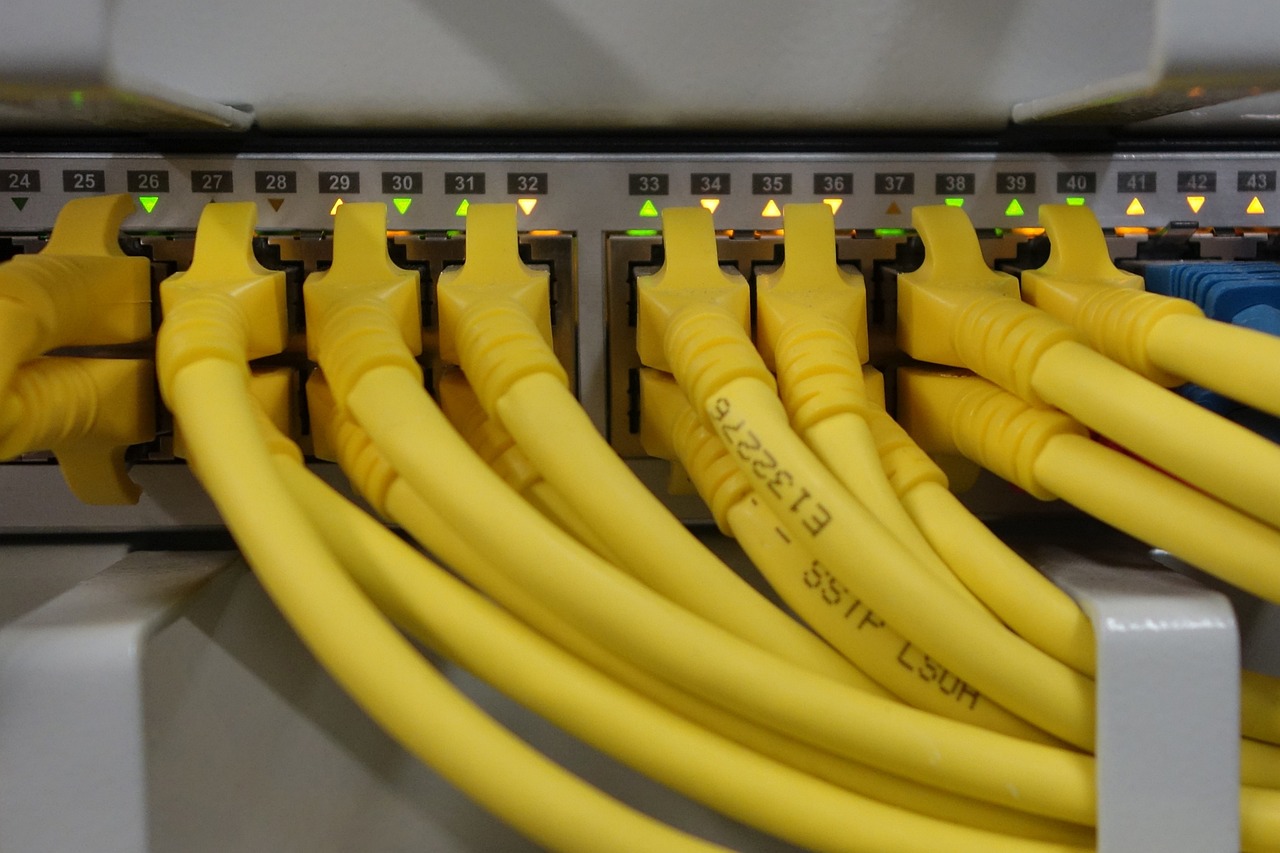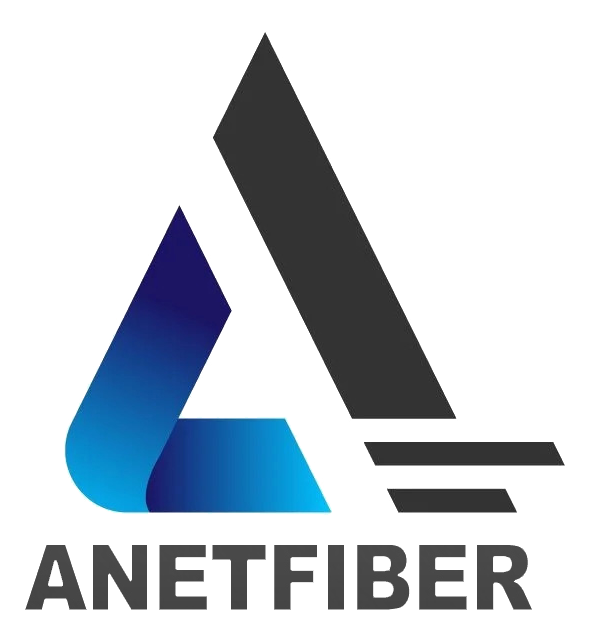The Ultimate Beginner's Guide to Fiber Optic Patch Panels: Types and Best Practices

Understanding Fiber Optic Technology and Patch Panels
Fiber optic technology has revolutionized the way data is transmitted, offering high-speed and reliable communication. Fiber optic communication involves the transmission of information through optical fibers using light pulses. This technology enables the transfer of large amounts of data over long distances with minimal signal loss, making it a crucial component in modern networking infrastructure.
The Basics of Fiber Optic Communication
In fiber optic communication, data is transmitted in the form of light pulses through fiber optic cables. These cables are made of glass or plastic fibers that carry the light signals from one end to another. The process involves encoding the data into light pulses, which travel through the fiber at incredible speeds. At the receiving end, these light pulses are decoded back into the original data format.
What Are Patch Panels and Their Role in Fiber Networks?
Patch panels serve as crucial components in fiber networks, providing a centralized location for connecting and managing fiber optic cables. They act as interface points where incoming and outgoing fiber optic cables can be connected, facilitating easy organization and maintenance of network connections. Patch panels play a vital role in ensuring efficient cable management and facilitating quick alterations or repairs within the network infrastructure.
By understanding the fundamentals of fiber optic communication and recognizing the significance of patch panels, individuals can gain insight into how these technologies work together to create robust and reliable network systems.
Exploring Fiber Optic Patch Panel Types
When it comes to fiber optic patch panel types, there are several variations designed to meet specific networking needs. Understanding the different types of patch panels is essential for creating an efficient and organized fiber network infrastructure.
Rack-Mount Patch Panels
Rack-mount patch panels are commonly used in data centers and telecommunication rooms where space optimization is crucial. These panels come in various port configurations, including 12-port, 24-port, and 48-port variations, allowing for flexibility in accommodating different network sizes and requirements. The rack-mount design enables easy installation within standard server racks, making them a popular choice for centralized network management.
Wall-Mount Patch Panels
Wall-mount patch panels are ideal for smaller-scale network setups or locations where floor space is limited. These compact panels provide a convenient solution for organizing and connecting fiber optic cables in office settings, small businesses, or areas with spatial constraints. Their user-friendly design allows for simple wall mounting, providing easy access to cable connections while maintaining a neat and tidy appearance.
ODF Patch Panels
ODF (Optical Distribution Frame) patch panels are specifically designed for high-density fiber optic applications. These panels offer a centralized platform for interconnecting and managing large numbers of fiber cables within telecommunications facilities or data centers. ODF patch panels provide enhanced scalability and efficient cable routing, catering to the demanding connectivity needs of modern networking environments.
By exploring the diverse range of fiber optic patch panel types, network administrators can make informed decisions when selecting the most suitable panel for their specific infrastructure requirements.
Patch Panel Connectivity Options
In the realm of fiber optic networking, patch panels offer a range of connectivity options to accommodate diverse infrastructure needs. Understanding the various patch panel connectivity options is crucial for designing and maintaining an efficient and reliable network.
LC, SC, ST, and MPO Patch Panels
LC, SC, ST, and MPO patch panels represent different connector types that cater to specific networking requirements.
LC patch panels are favored for high-density applications due to their small form factor and ability to support high data rates. They are commonly used in data centers and enterprise environments where space optimization is essential.
SC patch panels are known for their simple push-pull latching mechanism, providing quick and secure connections. Their versatility makes them suitable for both single-mode and multimode fiber applications.
ST patch panels feature a bayonet-style coupling mechanism, offering robust connections ideal for harsh environmental conditions. They are commonly utilized in industrial settings and areas where ruggedized connectivity is necessary.
MPO patch panels are designed to facilitate high-speed, high-bandwidth connections, making them well-suited for backbone networks and large-scale data transmission applications.
By considering the unique characteristics of each connector type, network administrators can make informed decisions when selecting the most appropriate patch panel connectivity solution for their specific networking environment.
Best Practices for Patch Panel Use
After installing fiber optic patch panels, it is essential to implement best practices for their efficient use and maintenance. Proper patch panel labeling and documentation, effective cable management solutions, and appropriate termination methods are crucial for ensuring the optimal performance and longevity of the network infrastructure.
Patch Panel Labeling and Documentation
Patch panel labeling and documentation play a pivotal role in streamlining network operations and troubleshooting processes. Each fiber optic cable connected to the patch panel should be clearly labeled with relevant information, including its origin, destination, and any specific details related to its function or usage. This meticulous approach simplifies the identification of cables during maintenance or reconfiguration tasks, minimizing downtime and potential errors.
Comprehensive documentation of the patch panel layout, cable connections, and any alterations made over time provides valuable insights into the network's configuration history. This documentation serves as a reference point for future modifications or expansions, enabling network administrators to make informed decisions based on accurate records.
Patch Panel Cable Management Solutions
Effective patch panel cable management solutions are essential for maintaining an organized and accessible network environment. Implementing cable management techniques such as using cable ties, racks, trays, or sleeves helps prevent tangling, kinking, or damage to the fiber optic cables. Properly managed cables not only enhance the visual tidiness of the networking infrastructure but also facilitate easy access for maintenance activities.
Furthermore, organizing cables in a structured manner reduces signal interference and minimizes the risk of accidental disconnections or disruptions. By adhering to standardized cable management practices, network administrators can ensure that the patch panels remain functional and well-maintained throughout their operational lifespan.
Patch Panel Termination Methods
When it comes to terminating fiber optic cables at patch panels, two common methods are widely employed: pigtail termination and pre-terminated cable assemblies.
Pigtail vs. Pre-terminated Patch Panels
Pigtail patch panels involve splicing individual fiber optic pigtails onto the incoming cables within the patch panel enclosure. This method requires careful fusion splicing or mechanical splicing of fibers with pigtails of appropriate lengths. Pigtail termination offers flexibility in managing varying cable lengths while providing opportunities for future expansions or modifications without altering existing cabling structures extensively.
On the other hand, pre-terminated patch panels feature factory-terminated fiber assemblies that are directly installed into the patch panel ports without additional splicing requirements. These pre-terminated assemblies are meticulously manufactured with precise connector terminations, ensuring consistent performance and reliability across all connections. Pre-terminated solutions offer rapid deployment capabilities and minimize installation time while maintaining high-quality connections.
By understanding the advantages and considerations associated with each termination method, network administrators can select the most suitable approach based on their specific infrastructure needs.
Troubleshooting and Maintenance of Fiber Optic Patch Panels
Patch Panel Testing Procedures
Ensuring the proper functionality of fiber optic patch panels is essential for maintaining a reliable network infrastructure. Patch panel testing procedures are designed to validate the integrity of connections, identify potential issues, and optimize performance.
One fundamental aspect of patch panel testing involves conducting visual inspections to check for any physical damage, contamination, or misalignments in the fiber connectors. Visual inspection tools such as fiber microscopes and end-face inspection probes enable technicians to examine connector end faces for dirt, scratches, or other imperfections that could affect signal transmission. By identifying and addressing these issues early on, network administrators can prevent signal degradation and maintain optimal network performance.
In addition to visual inspections, advanced testing methods such as optical time-domain reflectometry (OTDR) and optical loss testing are employed to assess the quality of fiber connections and detect any signal losses or anomalies along the transmission path. These tests provide valuable insights into signal attenuation, splice losses, connector performance, and overall link quality. By analyzing the test results, technicians can pinpoint specific areas requiring attention and implement targeted maintenance measures to enhance network reliability.
Regular patch panel testing not only helps identify existing faults but also serves as a proactive measure to prevent potential disruptions in network operations. By incorporating comprehensive testing procedures into routine maintenance schedules, organizations can uphold the integrity of their fiber optic networks and minimize downtime due to unexpected connectivity issues.
Common Troubleshooting Techniques
When encountering connectivity issues or performance discrepancies within fiber optic patch panels, employing effective troubleshooting techniques is crucial for swift issue resolution.
One common troubleshooting approach involves examining cable connections at the patch panel to ensure proper seating and alignment of fiber connectors. Inadequate mating or misalignment can lead to signal loss or intermittent connectivity issues. Re-seating connectors and verifying their alignment can rectify these issues and restore optimal signal transmission.
Another prevalent issue encountered in fiber optic networks is cable bending or excessive strain on fibers within the patch panel enclosure. Excessive bending radii or tension on fibers can cause signal attenuation or even permanent damage to the fibers. Implementing proper cable management practices that adhere to recommended bending radii guidelines mitigates these risks and promotes long-term network stability.
Furthermore, troubleshooting efforts may involve utilizing specialized equipment such as optical power meters and light sources to measure signal strength at various points along the fiber links connected to the patch panels. Discrepancies in signal strength indicate potential issues with connectors, splices, or overall link quality, prompting targeted interventions to address these concerns effectively.
By leveraging these common troubleshooting techniques alongside thorough patch panel testing, network administrators can swiftly diagnose and resolve connectivity issues while proactively maintaining the health of their fiber optic networks.
Future Trends and Upgrades in Fiber Optic Patch Panel Technology
As technology continues to advance, the field of fiber optic patch panels is also evolving, presenting new opportunities for patch panel upgrades and expansion options. These advancements are driven by the increasing demand for high-speed data transmission and the need to accommodate growing network infrastructures.
Patch Panel Upgrades and Expansion Options
In response to the escalating requirements of modern networking environments, patch panel upgrades are becoming more prevalent. These upgrades encompass various aspects, including enhanced port densities, improved connector technologies, and advanced cable management features. Network administrators are exploring options to upgrade their existing patch panels to support higher data rates and optimize space utilization within network cabinets or enclosures.
Furthermore, expansion options for fiber optic patch panels are being designed to facilitate seamless scalability and adaptability. Newer patch panel models offer modular configurations that allow for easy expansion without requiring extensive reconfigurations of the existing infrastructure. This modularity enables organizations to incrementally expand their network capacity as needed, accommodating the ever-growing demands for data connectivity.
As organizations strive to future-proof their network infrastructures, they are increasingly considering these expansion options as strategic investments that provide long-term flexibility and scalability.
Patch Panel Compatibility and Network Standards
Ensuring compatibility with established network standards is a critical consideration when implementing fiber optic patch panel technology. As network architectures evolve, adherence to industry standards becomes imperative for seamless interoperability and performance optimization.
Patch panels designed in accordance with prevailing network standards offer assurance of compatibility with a wide range of networking equipment and components. They undergo rigorous testing procedures to validate their conformance with industry specifications, guaranteeing reliable connectivity across diverse networking environments.
Moreover, compliance with network standards fosters interoperability between different vendors' equipment, promoting an ecosystem where components from various manufacturers can seamlessly integrate into cohesive network infrastructures. This interoperability not only simplifies procurement processes but also provides organizations with the flexibility to select best-in-class solutions tailored to their specific requirements.
By aligning with established network standards, fiber optic patch panels contribute to the creation of robust and future-ready network ecosystems that can accommodate evolving technologies and connectivity demands.
See Also
Comprehensive Guide to Understanding Fiber Optic Cables
3 Important Types of Ultimate Fiber Optic Cables
Understanding General Fiber Optic Network Solutions


